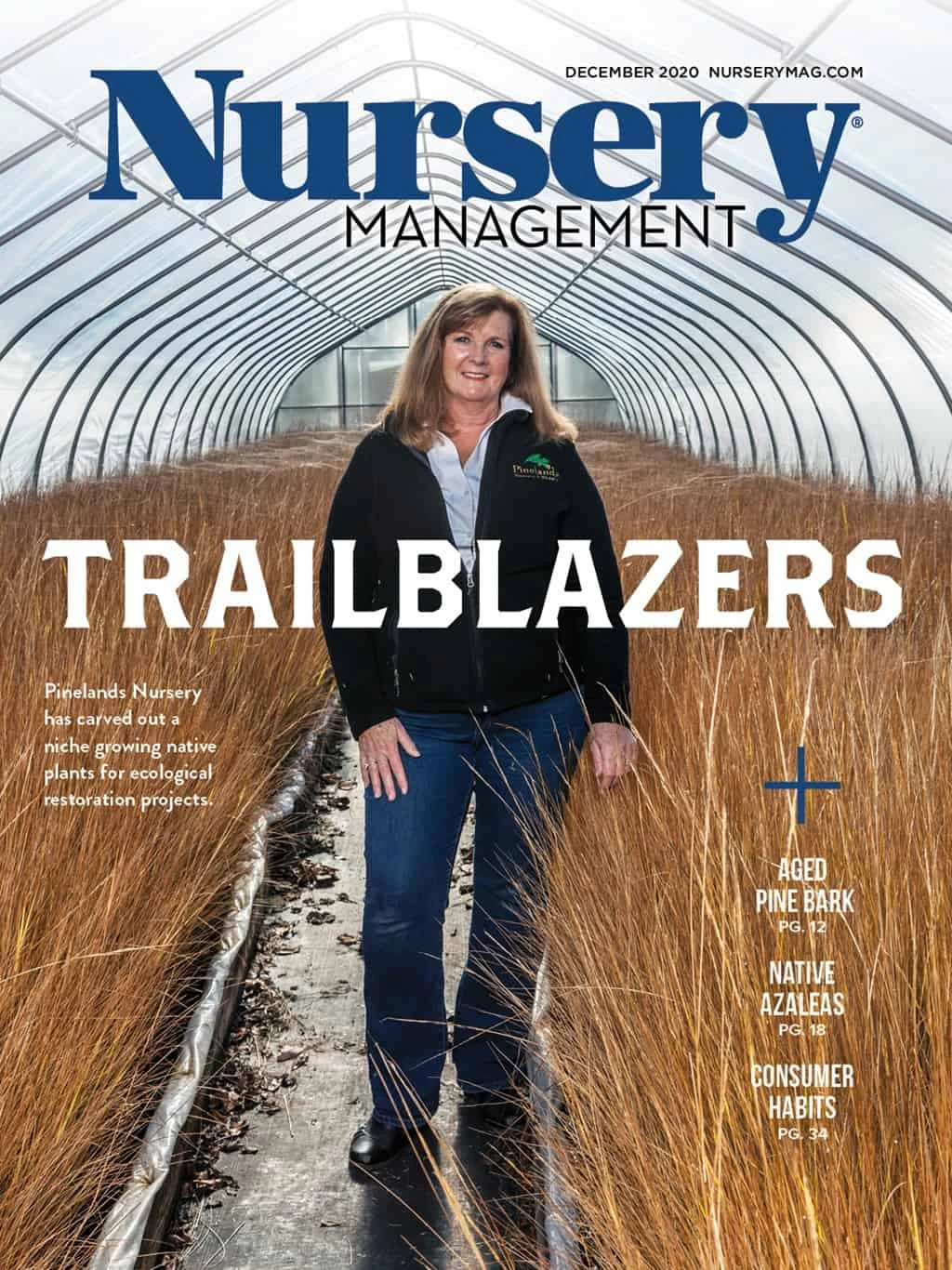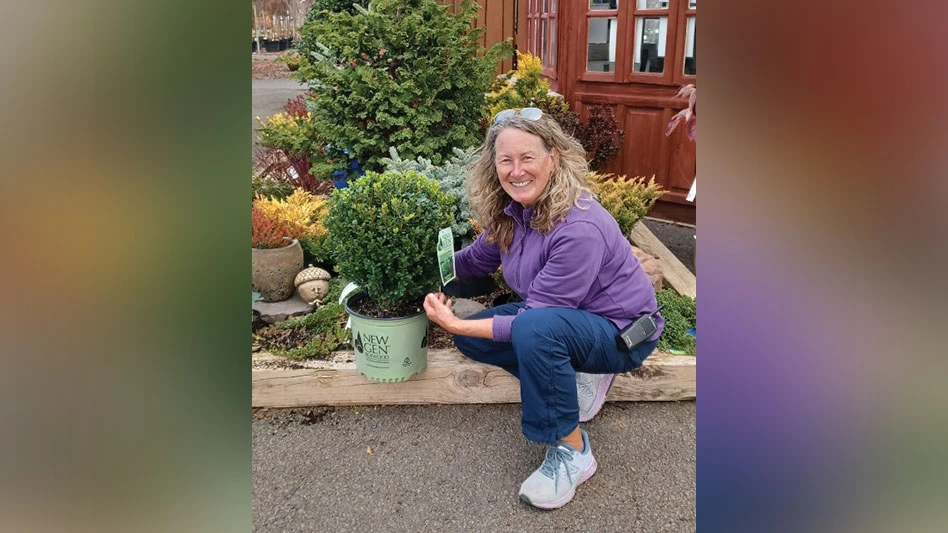

Now in its 20th year, Garden Media Group has released the 2021 Garden Trends Report. Its theme: The great reset.
In it, Garden Media Group observes, “This is truly the closest shared experience we as a world will ever have, connected to everyone, whether next door or across the globe. We’ll see many changes, but one overarching shift will shape many of them — collective action. And it’s not just the global community that is connecting; the magnifying glass is on communities banding together more than ever. You may have seen this in your community, whether online or in real life. But the shift in community collective is real and it is powerful.
“What’s more, gardens are tools for building more resilient and connected communities and neighborhoods. We're seeing neighbors getting to know each other and helping each other and being available. And a good healthy, garden is full of diversity.”
Trends are valuable when it comes to plant, product or service selection. The following is a portion of what GMG predicts will influence consumers and help the industry with strategic planning. To download the entire report, visit gardenmediagroup.com.
Broadacre cities
One hundred years ago, famed architect Frank Lloyd Wright designed a settlement called Broadacre City. These were super grids of 1-acre+ family homesteads designed to help communities thrive.
Today, the coronavirus is challenging the assumption that Americans must stay physically tethered to high-cost small-space cities to access the best work opportunities. Yes, there was already an exodus from high-priced big cities to more affordable midsize ones, but COVID-19 sped it up.
New York City’s three largest commercial tenants — JP Morgan, Barclays and Morgan Stanley — said it’s unlikely all their employees will return to offices.
Google axed deals for two million square feet of urban office space.
Facebook and Twitter are telling employees they can work remotely forever.
In fact, many newly remote workers prefer somewhere closer to family or fresh air.
If enough remote workers vote with their feet, Broadacre-type cities such as Usonia, New York or Civano, Arizona — with emphasis on community — will be more critical. And they will change our cities and industry.
Workers will get out more during the workday, so public spaces — parks and trails — will become an integral part of daily life, not just after work or on weekends.
Downtown areas will beautify their streets and stores will need interiorscaping to make their space more inviting.
Cultural experiences that allow for freedom of movement, particularly those outdoors — will benefit from increased demand upon reopening.
People will want entertainment and experiences in those outdoor spaces.
There will be even greater demand for houseplants and home office plants, whether people are setting the stage for virtual meeting backdrops or just wanting to improve concentration.

Backyard aficionado
More than half of American adults are spending two additional hours a day outside during quarantine than before the outbreak began.
Research shows we picked up 16 million new gardeners during COVID-19, many of whom are under 35.
These new customers will not stay unless we find ways to make them.
Gardening will become part of their everyday lives, school curriculums and psyche. We need to develop products and bundle items to make gardening easier.
This new gardener is ripe for education, from simple plant lists or Facebook consulting services to new gardeners to install and provide care.
This new gardener cares about growing food.
Edible-garden influencers have seen up to 400% growth on their channels and are being inundated with questions.

Prior to the COVID-19 pandemic, Timothy Hammond of Big City Gardener would receive one message every few days from a follower. He now receives dozens of questions a day from new gardeners seeking basic tips. He gained 10k followers in 6 weeks.
The new gardener is interested in reducing the lawn. There is a return to the backyard — and it’s not just about the lawn. According to a recent National Garden Bureau survey, 67% of respondents 35 and under shared that, while they want some green lawn, they also desire the rest of their yard planted with a wide variety of other plants.
Landscape architects are seeing families change their lawn preferences, according to a recent poll by the National Wildlife Federation’s Garden for Wildlife initiative. NWF’s Garden for Wildlife initiative encourages Americans to design gardens with food, water, and shelter for wild animals.
Most importantly, they’re interested in reducing stress and increasing health and wellness. Simple ways to incorporate wellness from the comfort of the home or nearby outdoor spaces have taken over as essential practices to maintain connections, release newfound stress, and recuperate some semblance of normalcy.

Design abundance
Claudia West, ASLA and co-author of “Planting in a Post Wild World,” explains that nature doesn’t live “out there” anymore, because “out there” is gone.
Nature lives in our backyards, in our developments and parking lots or rooftop gardens — or it doesn’t live.
“I truly believe that wildness and nature is a renewable resource and that every single plant we put in the ground can make a difference,” West says. “If you don’t know it, you don’t care for it, and you don’t protect it.”
Source: Garden Media Group

Explore the December 2020 Issue
Check out more from this issue and find your next story to read.
Latest from Nursery Management
- The Growth Industry Episode 3: Across the Pond with Neville Stein
- What's in a name?
- How impending tariffs and USDA layoffs impact the horticulture industry
- Shifting the urban environment
- These companies are utilizing plastic alternatives to reduce horticultural waste
- How to create a sustainable plant nursery
- Lamiastrum galeobdolon ‘Herman’s Pride’
- One of rarest plants on earth: Tahina spectabilis





